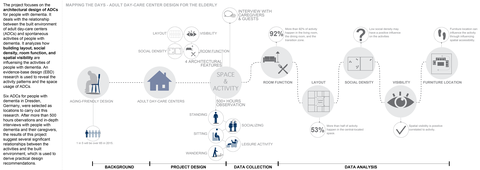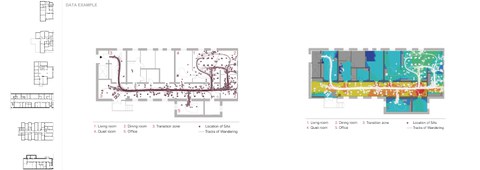Mapping the days
The relationship between the built environment in day-care centers and the
spontaneous activities of people with dementia
This doctoral thesis focuses on the built environment of adult day-care centers
(ADCs). It presents a mixed-method empirical research on six German ADCs with the
purpose of understanding the relationship between their built environment and the
spontaneous activities (SAs) of their care recipients with dementia.
Field observations, Space Syntax analysis and interviews are the methods of the
research. They are used to analyze how the distributions and patterns of the SAs of
people with dementia are in relation to the building layout, room function, social
density, and spatial visibility and accessibility of the ADCs.
The research results suggest that the built environment in ADCs has influence on the
distributions of SAs of people with dementia. In terms of building layout, it is revealed
that the central space has a gathering effect on the location of SAs. In terms of room
function, it is showed that more than 90% of SAs are distributed in the living room,
the dining room, and the transition area/corridor. While no correlation is observed
between the social density and the SA distribution, significant positive correlations
are suggested between the spatial visibility and the SA distribution, as well as the
spatial accessibility and the SA distribution. Moreover, furniture location is revealed to
have an effect on the SA distribution through influencing the spatial accessibility.
The thesis discusses the research findings in comparison with other previous studies.
In addition, practical recommendations for design of ADCs for people with dementia
are provided with examples and illustrations.
 © K. Lassig
© K. Lassig
Doktorandin
NameCongsi Hou M.Arch.
Send encrypted email via the SecureMail portal (for TUD external users only).
Chair of Social and Health Care Buildings and Design


